At Risk: Lake Bracciano As Water Level Plummets
One of Italy's most beautiful and least polluted lakes is at serious risk of drying up. The water level of Lake Bracciano, 20 miles north of Rome, has fallen by almost 6 feet in the past two years. Because this is still wintertime, experts predict that the water level will sink further in coming month because global warming, by raising the atmospheric temperature, means that more water than ever before evaporates with sunlight, especially in summer. As a headline in the daily Corriere della Sera declared ominously March 12, "Lake Bracciano is disappearing." The normal drop in the water level has been of only 3 feet annually for the past half century.
Emiliano Minnucci, member of Parliament for the Partito Democratic, raised the question in Parliament with a formal interrogation addressed to Environment Minister Gian Luca Galletti and to Graziano Delrio, Minister for Infrastructure and Transport. "The continuous taking of lake water by Acea Ato2 is dramatic," Minnucci said. "The lake is at risk of dying because of this.... For Acea our lake is a bottomless resource, but this is no longer tolerable."
Through Acea, the water from Lake Bracciano feeds the aqueducts of both Rome itself, with its almost three million inhabitants, and Civitavecchia, with its population of 63,000. For this reason, the water is regularly monitored for reasons of health. Acea's defense is that it obeys the current rules for withdrawing lake water, an assertion disputed by environmentalists. The company "fully respects the contracts for concession of management of hydric service stipulated in June 1990," said an Acea spokesperson.
Nevertheless, concerned hydrologists, environmentalists and geologists speaking at a conference on the endangered lake held March 11 at Anguillara Sabazia, one of the lake's three townships, agreed that the danger is real. As a result of the severe drop in the water level, the underwater plants near the shore -- some extremely rare -- which feed the lake fish are left to dry and die, they warned. As the water recedes, the shoreline plants push inward, but the water bed there is already crowded, and so the plants, and hence the fish food, and the fish, die out.
Birds too are affected. Some lay eggs on little floating nests near the shoreline or just on it. As the shoreline recedes, foxes, rats and people too seize their eggs. "This level of stress has not been seen in centuries," said Mattia Azella of "La Sapienza" Rome University. "The lake is a habitat for vegetation, with seventeen species of underwater plants, some extremely rare. It is unique in Europe."
In addition, given its rich volcanic soil and gentle climate, the area is noted as a supplier of fresh fruits and vegetables for Rome. Here the problem is that the open fields and greenhouses are being irrigated with lake water drawn from wells drilled -- many illegally -- up to 1500 feet below the surface. At the Anguillara conference it was reported that up to 60% of the water lost in recent years is from this kind of irrigation.
"That loss could be cut in half with improved technology," said Prof. Riccardo Valentini, climatologist at the Tuscia University in Viterbo, former researcher at the Carnegie Institution in Stanford, California. "The irrigation is overdone. It's like overfeeding a child, just in case."
The equilibirum between lake input from the water sources -- that is, rainwater and underground springs -- and output has been lost, in short.
Lake Bracciano is almost penny-round, with a surface that covers almost 22 square miles, and a maximum depth of perhaps 525 feet. Encircling it for 17 miles is a narrow road, believed to have been first built by the ancient Romans, and today a favorite of Sunday cyclists. All is overlooked by a single quiescent volcano high above Trevignano, Monte Rocca Romana.
In the deep past the water sources feeding into the lake included three small lakes to the east, situated upon slightly higher terrain. Of the three, today only one remains: tiny Lake Martignano. Today's main source thus remains rainwater, which pours down into the lake from the ring of hills around the basin, and especially from the northern lake shore of Trevignano Romano and Vicarello, a nearby promontory. Rainwater also feeds the myriad underground springs in the lake, whose bubbles surging up to the surface are readily visible and even felt underfoot while wading in the water.
Lake Bracciano was created by what scientists call "tectonic collapse," when a gigantic magma chamber, emptied of its lava by millennia of exploding nearby volcanoes, caved in upon itself perhaps 600,000 years ago. Due to its volcanic origins, for over a mile the shore of Trevignano Romano is lined with a retaining wall of gigantic black boulders that had been wrenched from the basalt rock walls of the volcanoes.
For the ancient Romans, this was Lacus Sabatinus, named perhaps for "Sabus" or "Sabatio," a divine precursor to Dionysus, the god of wine, fertility, religious ecstasy and madness too. Livy relates in his Volume 6 of The History of Rome that the people of Sabatia were made Roman citizens in 387 BCE as members of the "Tribus Sabatina", one of twenty-two "rural tribes" represented in the Roman Senate. Gradually Sabatia came to be considered almost as important as Caere, today's Cerveteri, on the seacoast.






























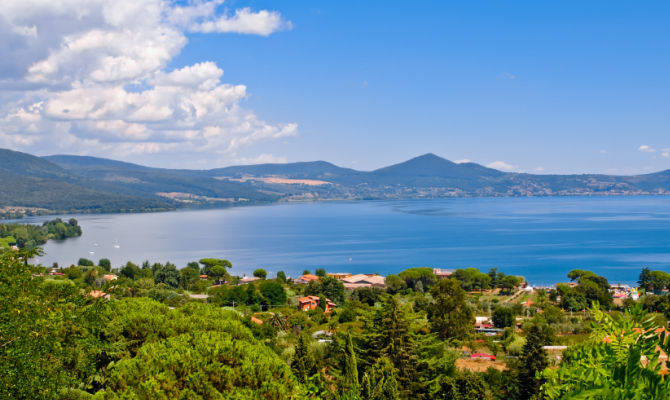
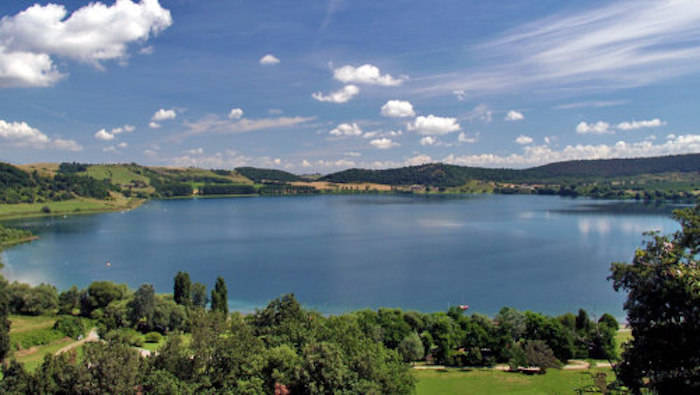
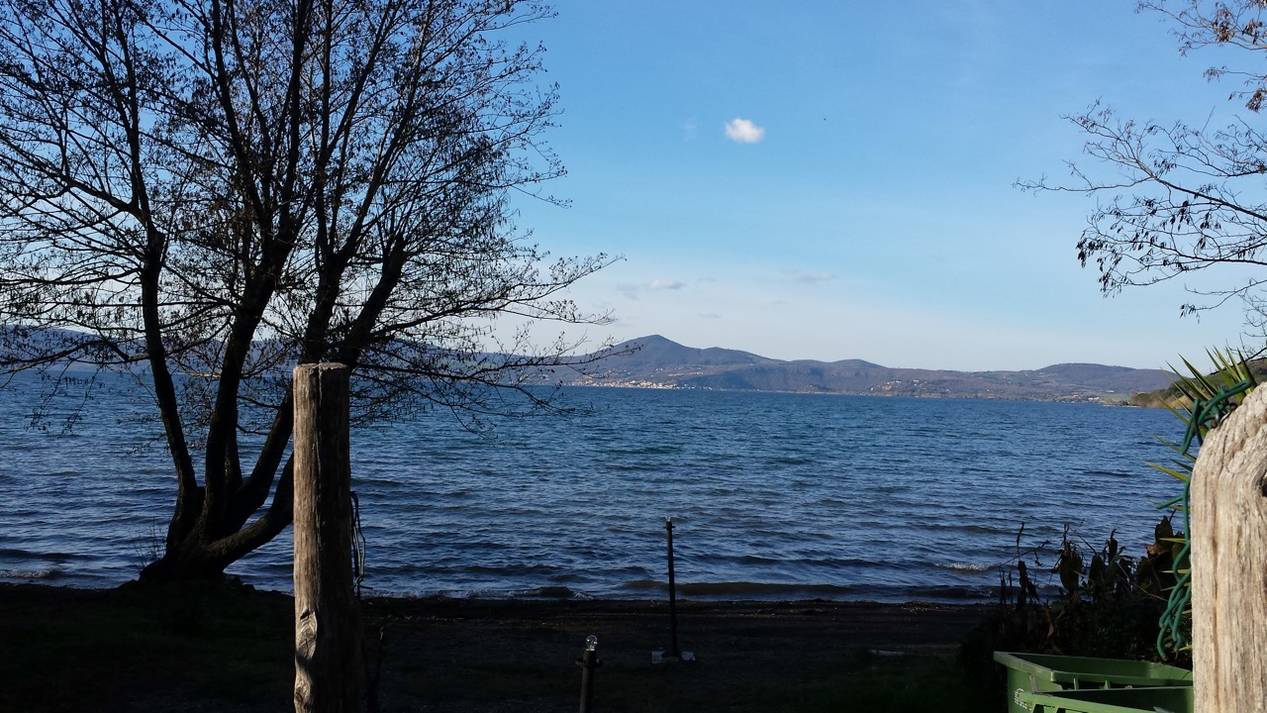
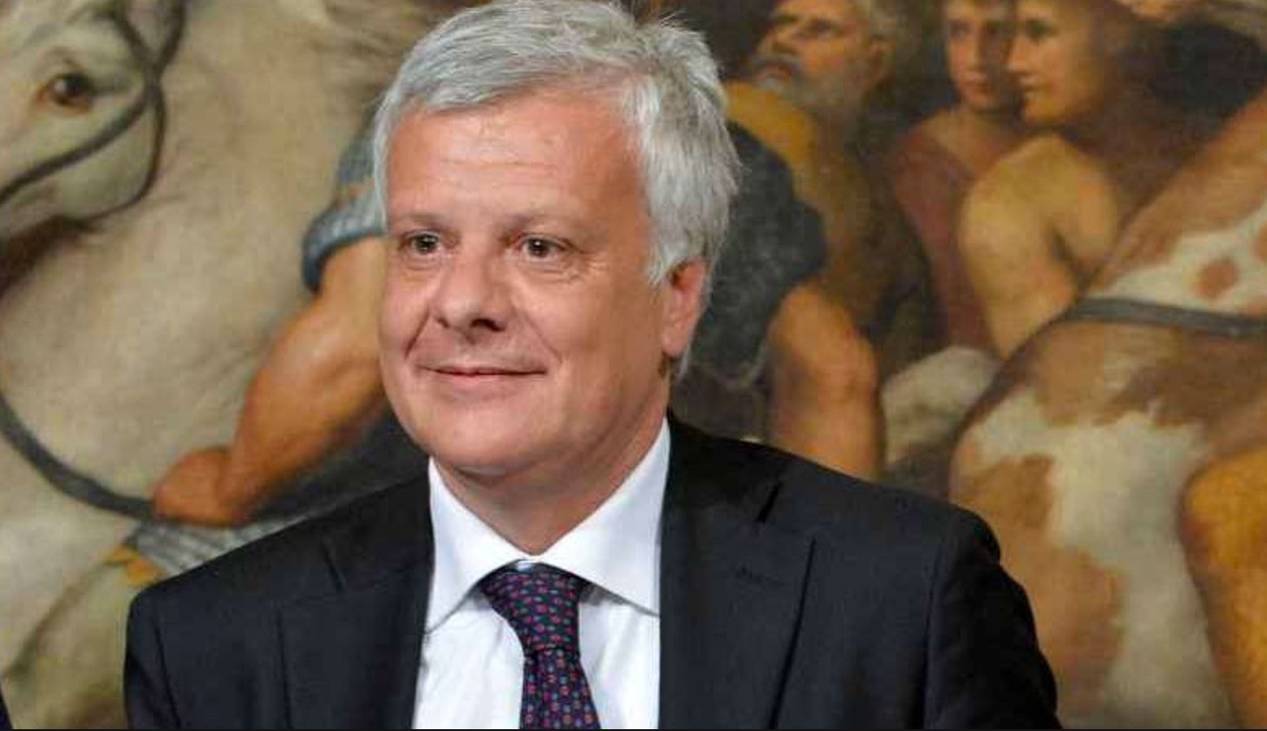
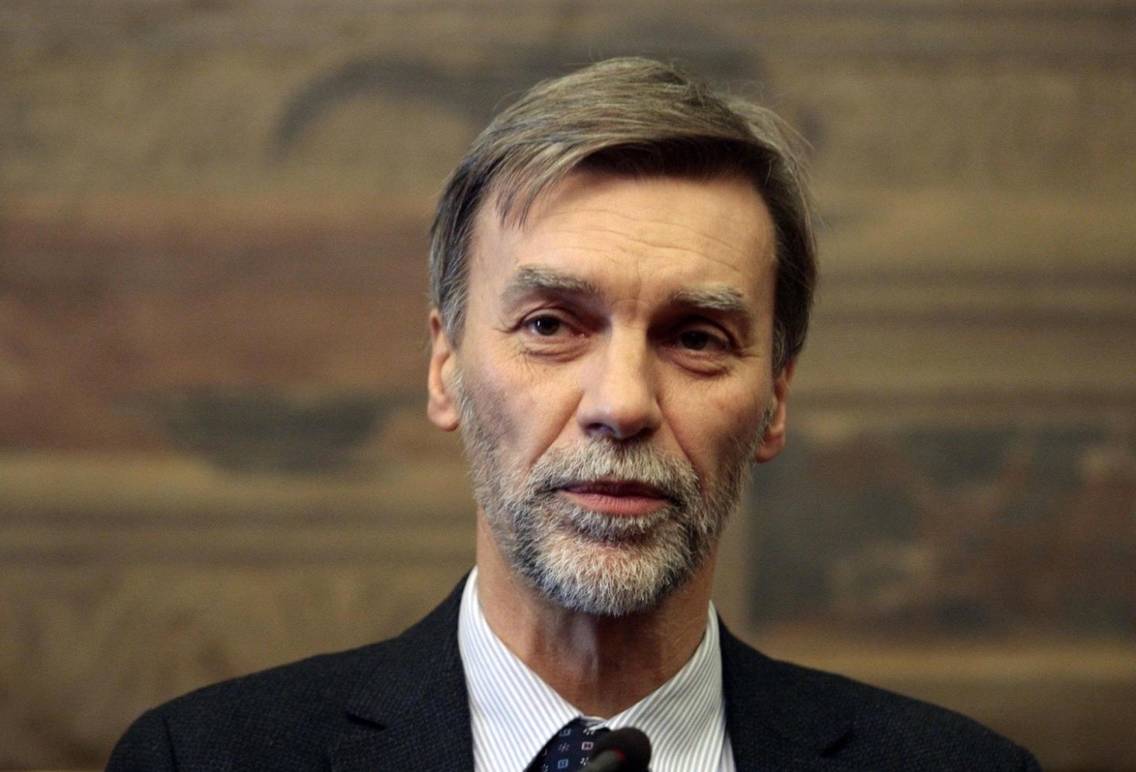
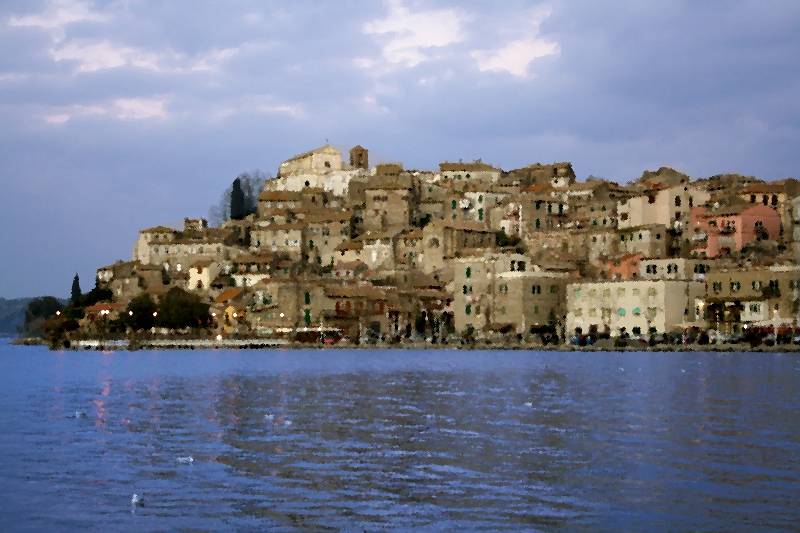
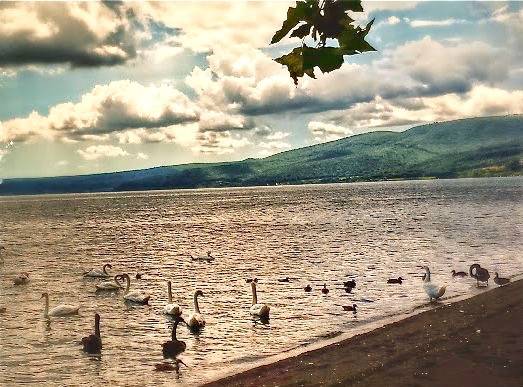






i-Italy
Facebook
Google+
This work may not be reproduced, in whole or in part, without prior written permission.
Questo lavoro non può essere riprodotto, in tutto o in parte, senza permesso scritto.